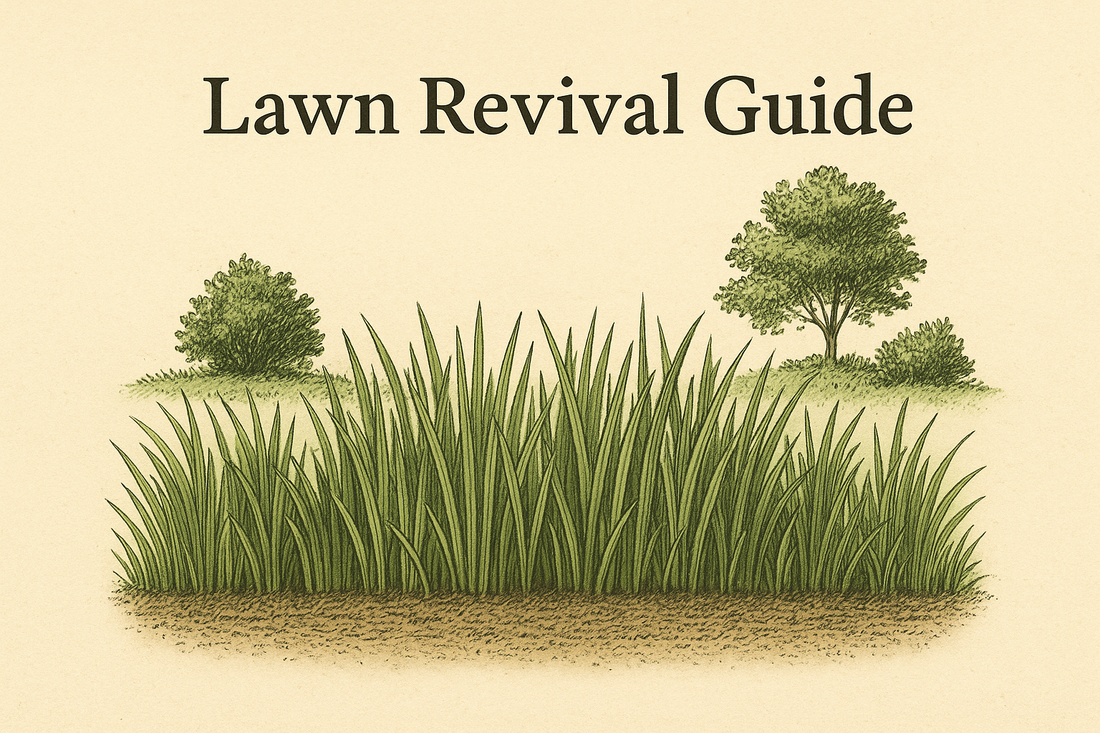
Bring a Tired Lawn Back to Life—Naturally
Why lawns fade in midsummer
Regular irrigation keeps grass alive, yet every soaking also dissolves and leaches nutrients. Heat accelerates chlorophyll breakdown, leaving turf pale and slow to recover from mowing. A simple liquid program restores what the hose washes away.
Six clues your grass is running on empty
- Blades turn pale green within a week of mowing.
- Patchy areas linger even after reseeding.
- Tires leave slight depressions that stay visible.
- Weed pressure increases near downspouts.
- The mower leaves brown tips on otherwise green blades.
- Growth stalls although soil stays moist.
Spot two or more of these and plan to feed soon.
Two-part rescue plan
-
Dark Venom 3-0-5 with iron
- High iron for deeper chlorophyll
- Potassium to help blades hold water during heat stress
-
All Purpose 7-0-2
- Moderate nitrogen avoids surge growth
- Additional potassium supports root repair
Measure Dark Venom at 3 oz per 1 000 sq ft. Apply to damp turf, then water long enough to move product into the thatch. Two weeks later apply All Purpose at 2 oz per 1 000 sq ft. The interval lets iron green the blades before nitrogen resumes steady growth.
Month-long schedule on one line
Week 1: Dark Venom — Week 3: All Purpose — Week 5: Dark Venom — Week 7: All Purpose
Adjust the cycle one week shorter after heavy rain or if grass begins to dull.
Practical mowing tips for rapid recovery
- Keep blades at least 3 inches tall during heat spells.
- Sharpen the mower once a month; clean cuts lose less moisture.
- Alternate mowing directions so wheels do not compact the same strip.
A lawn fed and mown with these habits resists traffic marks and rebounds from summer stress in days rather than weeks.
Feed with purpose, mow with care, and watch color deepen by the next weekend.
